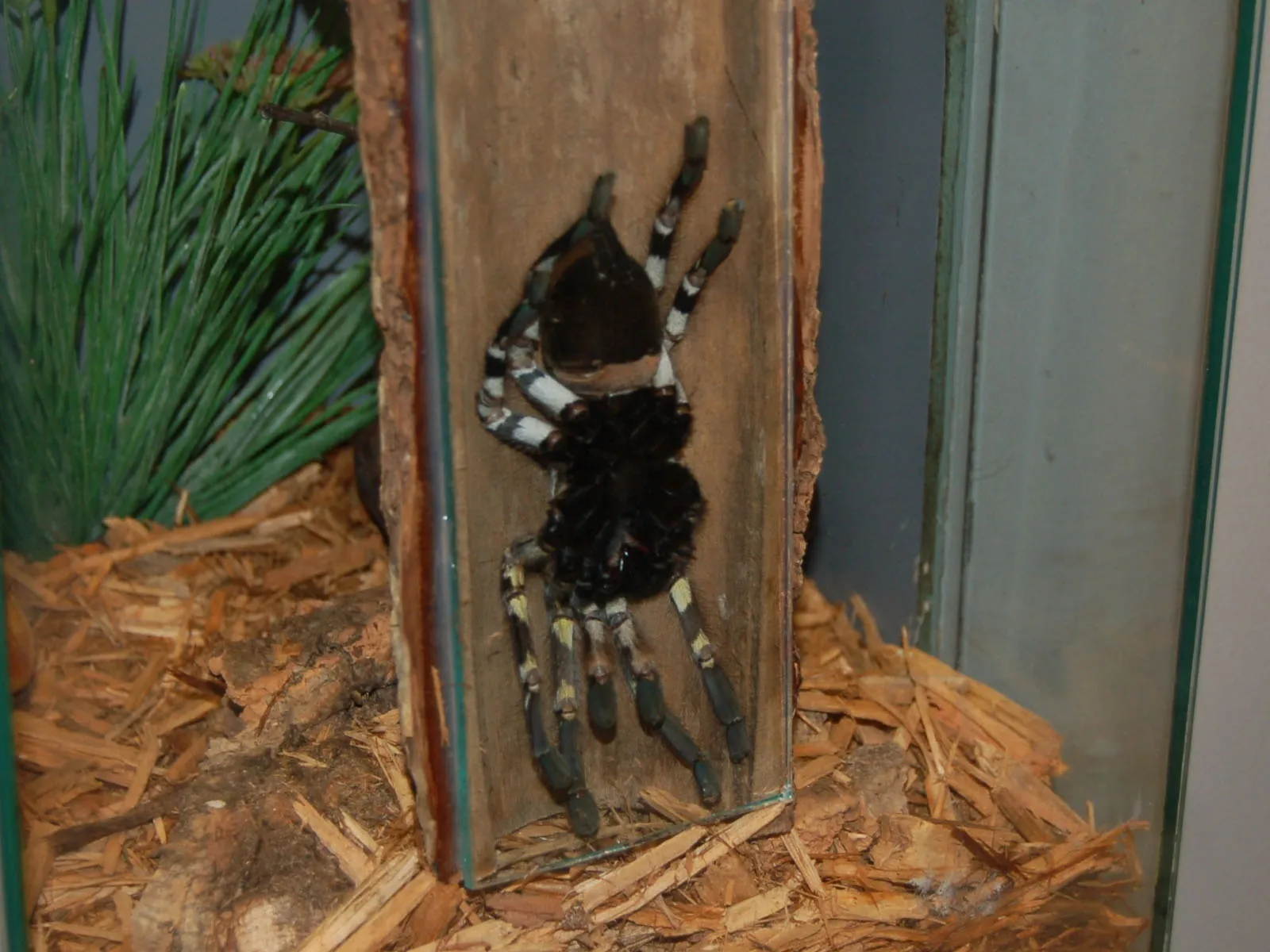What is the Indian Psychedelic Tarantula?
The Indian Psychedelic Tarantula, scientifically known as Chilobrachys natanicharum, is a striking and relatively new species of tarantula. Discovered in the forests of northeastern India, this spider has quickly gained notoriety among arachnid enthusiasts for its vibrant coloration and unique appearance. The ‘psychedelic’ descriptor is well-earned, as the tarantula boasts an array of iridescent colors that often appear to shift and shimmer depending on the light and viewing angle. Its discovery has added to the fascinating biodiversity of India and sparked considerable interest in the scientific community and among pet keepers. This captivating species has become a symbol of the beauty and diversity that still awaits discovery in the natural world.
Appearance and Identification
Size and Physical Characteristics
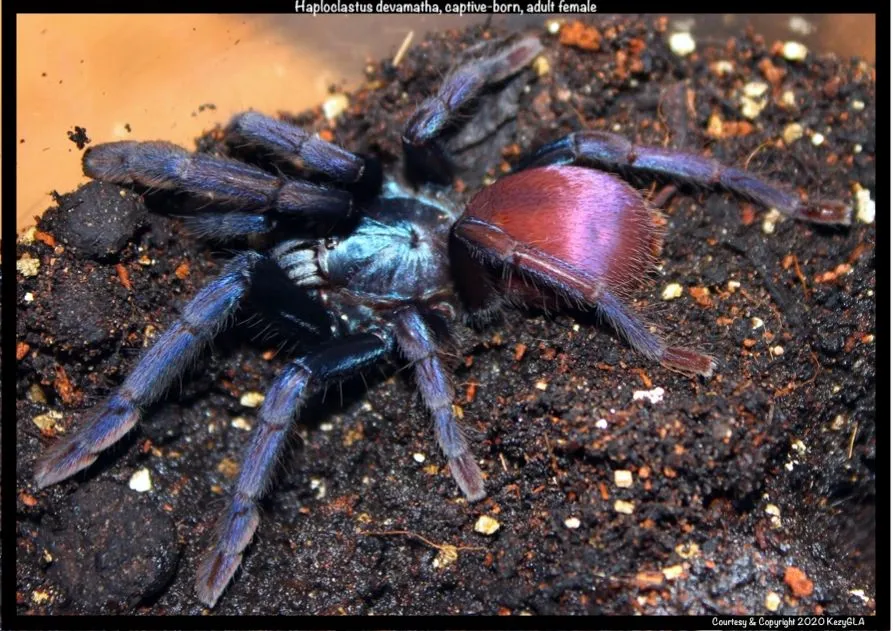
The Indian Psychedelic Tarantula is a medium-sized tarantula, with females typically reaching a leg span of about 5 to 6 inches. Males tend to be slightly smaller. Like other tarantulas, it has eight legs, two chelicerae (mouthparts), and a body divided into two main parts: the cephalothorax (head and thorax combined) and the abdomen. The body is covered in hairs, which serve sensory functions and contribute to its overall appearance. The size and robust build of these tarantulas are typical for their genus, but the vibrant coloration sets them apart from many other spider species.
Coloration and Unique Markings
The most distinctive feature of the Indian Psychedelic Tarantula is its striking coloration. The carapace (the top part of the cephalothorax) often exhibits a metallic blue or green sheen, while the legs and abdomen can display a combination of vibrant colors, including shades of purple, orange, and pink. These colors are not due to pigments, but rather to the structure of the hairs and cuticle, which scatter light to create an iridescent effect. This phenomenon gives the tarantula its ‘psychedelic’ name. The specific colors and patterns can vary slightly between individuals, adding to their unique appeal. The bright coloration could serve multiple purposes, including attracting mates or potentially warning off predators. The image here shows a detailed view of the spider’s legs, showcasing the array of iridescent colors.
Habitat and Distribution
Where They Live
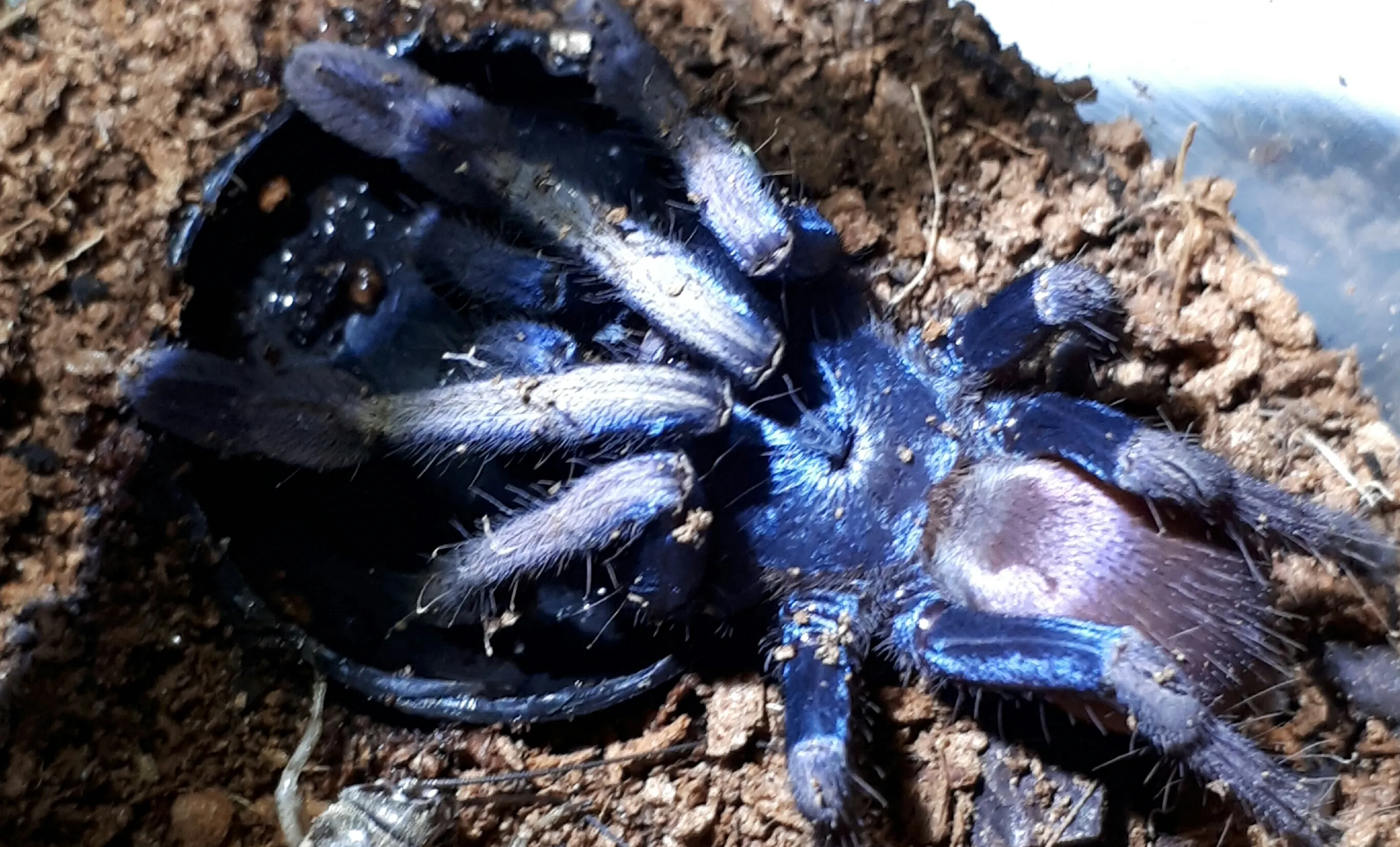
These tarantulas are native to the lush, humid forests of northeastern India. They are primarily found in areas with dense vegetation and ample hiding places. They are terrestrial spiders, meaning they spend most of their time on the ground. The specific locations where they have been found include areas with specific environmental conditions, such as high humidity and moderate temperatures. Their natural habitat provides the necessary conditions for their survival, including shelter, food, and the right moisture levels.
Preferred Environments
The Indian Psychedelic Tarantula prefers environments that offer both shelter and a stable temperature. They often create burrows in the soil or utilize natural crevices and undergrowth as their homes. A humid environment is critical for their health, as it helps them to regulate their body’s moisture levels. The presence of leaf litter, fallen logs, and other natural debris on the forest floor provides hiding spots and opportunities to ambush prey. This habitat also mimics what you might see if you are keeping them as pets. The image highlights the type of environment these tarantulas thrive in, showing a forest floor rich with vegetation and potential hiding spots.
Diet and Feeding Habits
What They Eat
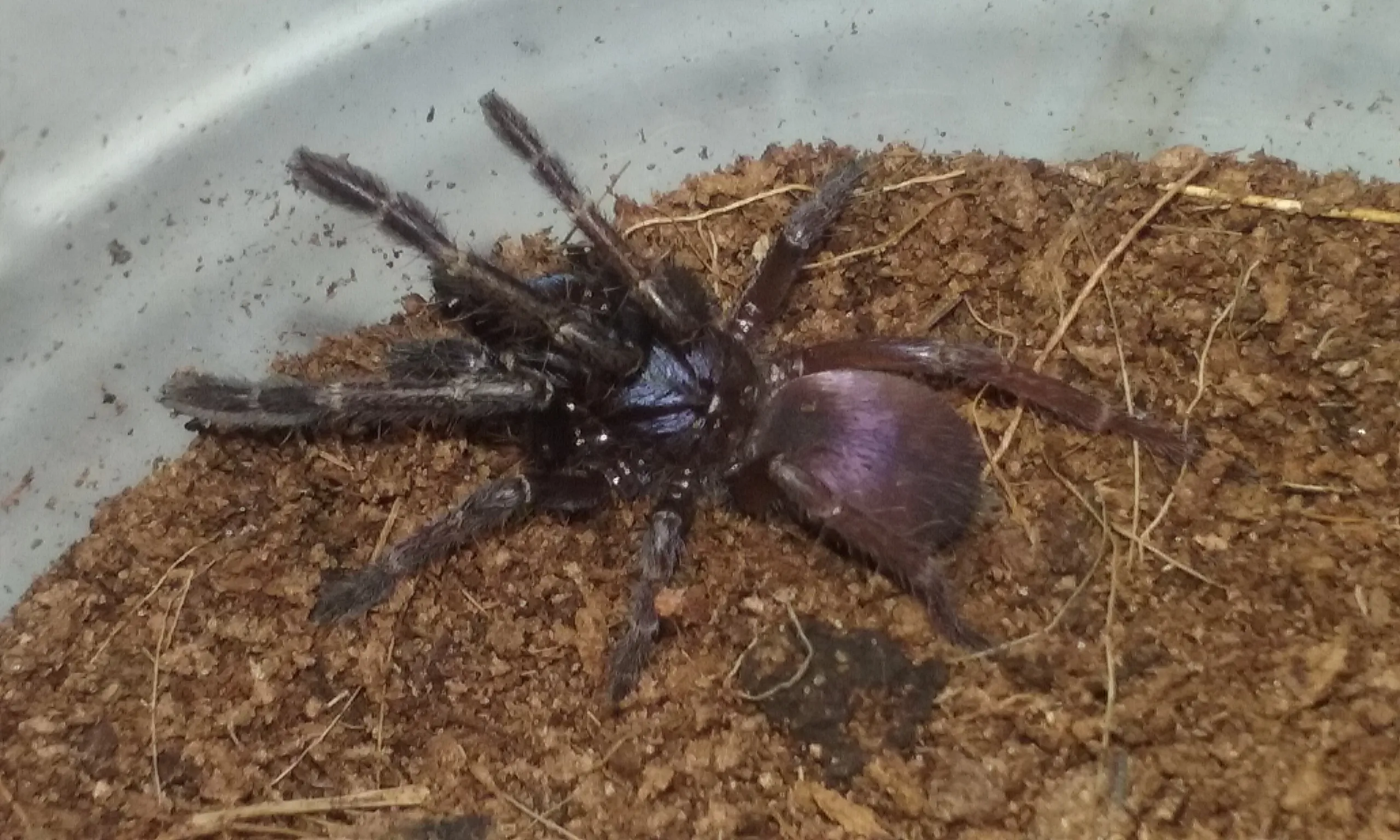
As predators, Indian Psychedelic Tarantulas feed primarily on insects and other invertebrates. Their diet in the wild consists of whatever prey is available in their habitat. Common food sources include crickets, beetles, cockroaches, and various types of insect larvae. They are ambush predators, meaning they wait patiently for their prey to come within striking distance. They use their fangs to inject venom, which paralyzes the prey, allowing the tarantula to feed. For pet owners, feeding these tarantulas a diet of commercially raised insects is common to ensure nutritional balance.
Feeding Frequency
The feeding frequency of an Indian Psychedelic Tarantula depends on its age and size. Juvenile tarantulas require more frequent feedings, typically every few days, to support their growth. Adult tarantulas can be fed less often, perhaps once or twice a week. Overfeeding should be avoided, as it can lead to health problems. The tarantula’s abdomen size is a good indicator of its nutritional state; a plump abdomen indicates a well-fed spider. Providing a varied diet can also help ensure they get all the necessary nutrients. The image depicts a tarantula in the process of feeding, showcasing its predatory behavior.
Behavior and Temperament
Defensive Mechanisms
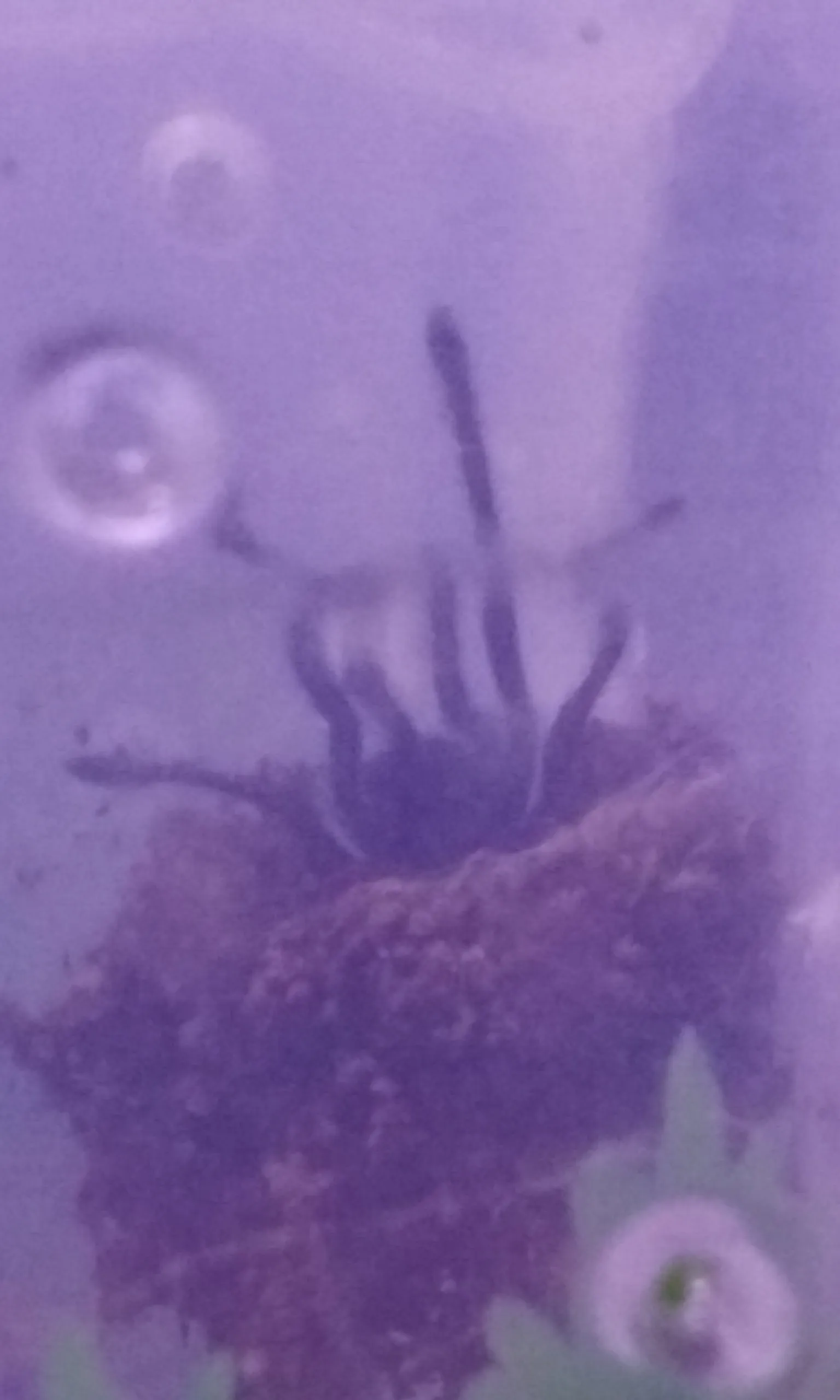
Like many tarantulas, the Indian Psychedelic Tarantula has several defensive mechanisms. When threatened, they may display a threat posture, rearing up on their hind legs and showing their fangs. They may also flick urticating hairs from their abdomen, which can cause irritation to skin and eyes. While their venom is not typically considered life-threatening to humans, a bite can be painful. Their primary defense, however, is their ability to hide and camouflage themselves within their environment. They are more likely to flee than to engage in combat. The image here shows the typical defensive stance of a tarantula, warning any potential predator to back off.
Social Interactions
Indian Psychedelic Tarantulas are generally solitary creatures, except during mating. They do not exhibit complex social behaviors and tend to occupy their own territories. In captivity, keeping multiple tarantulas in the same enclosure is not recommended, as it can lead to competition and aggression. When males and females are introduced for mating, the process must be carefully monitored, as the female may attempt to eat the male after mating. Interactions are usually limited to mating, and the spiders will otherwise spend most of their time alone, actively hunting or resting within their burrow or hideout. The image highlights a solitary tarantula in its enclosure, demonstrating their nature.
The Psychedelic Aspect
What Causes the Psychedelic Appearance

The vibrant colors of the Indian Psychedelic Tarantula are due to a phenomenon called iridescence. Unlike pigments, which absorb certain wavelengths of light and reflect others, iridescence results from the interaction of light with microscopic structures on the spider’s hairs and cuticle. These structures cause light to diffract, creating the illusion of shifting, shimmering colors. The specific arrangement and composition of these structures determine the range of colors that are visible. The angles at which you view the spider also affect how the colors appear, giving them their signature ‘psychedelic’ look. This natural display is a result of millions of years of evolution and adaptation within their environment.
Evolutionary Reasons for the Coloration
The bright coloration likely serves several evolutionary purposes. One hypothesis is that the colors play a role in attracting mates. The vibrant display could be a form of visual communication, with males using their colors to attract females and signal their health and fitness. Another possible reason is camouflage. The colors may help the tarantula blend in with its environment, making it harder for predators to spot them and increasing their chances of survival. Some scientists believe the bright coloration may also serve as a warning signal, deterring potential predators from attacking. This display of colors is a reminder of how complex and sophisticated natural selection can be.
Conservation Status
Threats to Their Survival
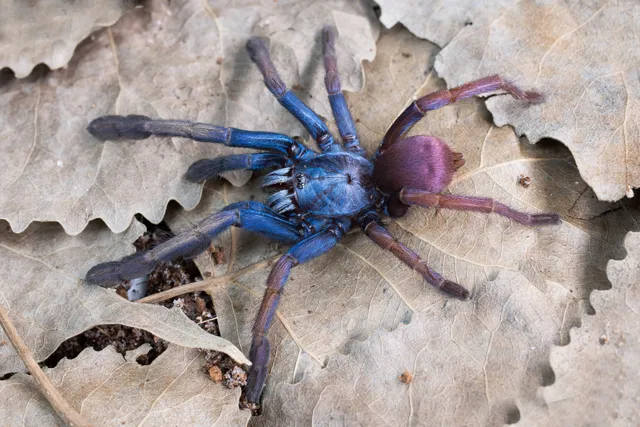
The Indian Psychedelic Tarantula faces several threats. Habitat loss due to deforestation and human development is a major concern. As their natural forest habitats are destroyed, the tarantulas lose their homes and are forced to compete for resources. Illegal collection for the pet trade also poses a threat. Due to their stunning appearance, these tarantulas are highly sought after by collectors, and this demand can lead to overexploitation. Climate change and environmental pollution may also affect their survival, impacting their food sources and overall health. Conservation efforts are crucial to ensure the long-term survival of this unique species. The image shows an area of deforestation, which is a threat to their habitat.
Conservation Efforts
Conservation efforts are essential to protect the Indian Psychedelic Tarantula. Protecting their natural habitat is a top priority, which can be achieved through the establishment of protected areas and sustainable forest management practices. Regulating and monitoring the pet trade is also vital to prevent over-collection and ensure that the species is not exploited. Raising public awareness about the importance of tarantula conservation and the threats they face is critical. Supporting research and monitoring programs helps scientists understand the species’ needs and develop effective conservation strategies. By combining these efforts, it is possible to safeguard the future of these beautiful and fascinating creatures. The image shows a conservation project within the tarantula’s habitat.
Interesting Facts and Trivia
Here are a few fascinating facts about the Indian Psychedelic Tarantula. Their vibrant colors are most pronounced in adult females. The tarantulas can live for many years, with females living longer than males. The venom of the Indian Psychedelic Tarantula is not considered highly dangerous to humans, but bites can still be painful. They are skilled climbers and can often be found on tree trunks or other vertical surfaces. These spiders play an important role in their ecosystem by controlling insect populations. Their discovery has significantly expanded our understanding of tarantula diversity. There is a growing community of enthusiasts dedicated to the preservation of this unique and beautiful species. The image shows the tarantula’s habitat, which also provides some interesting facts.
